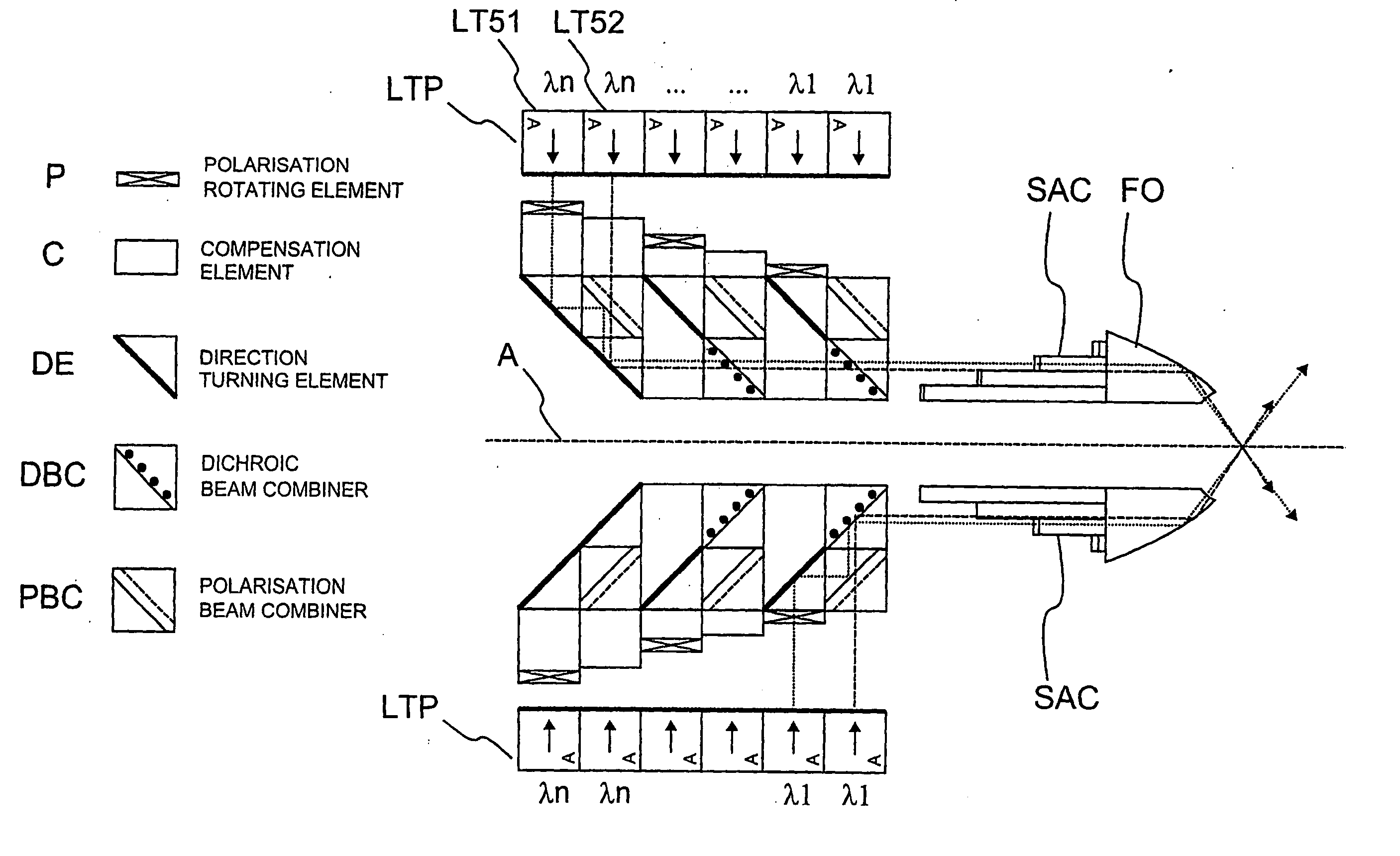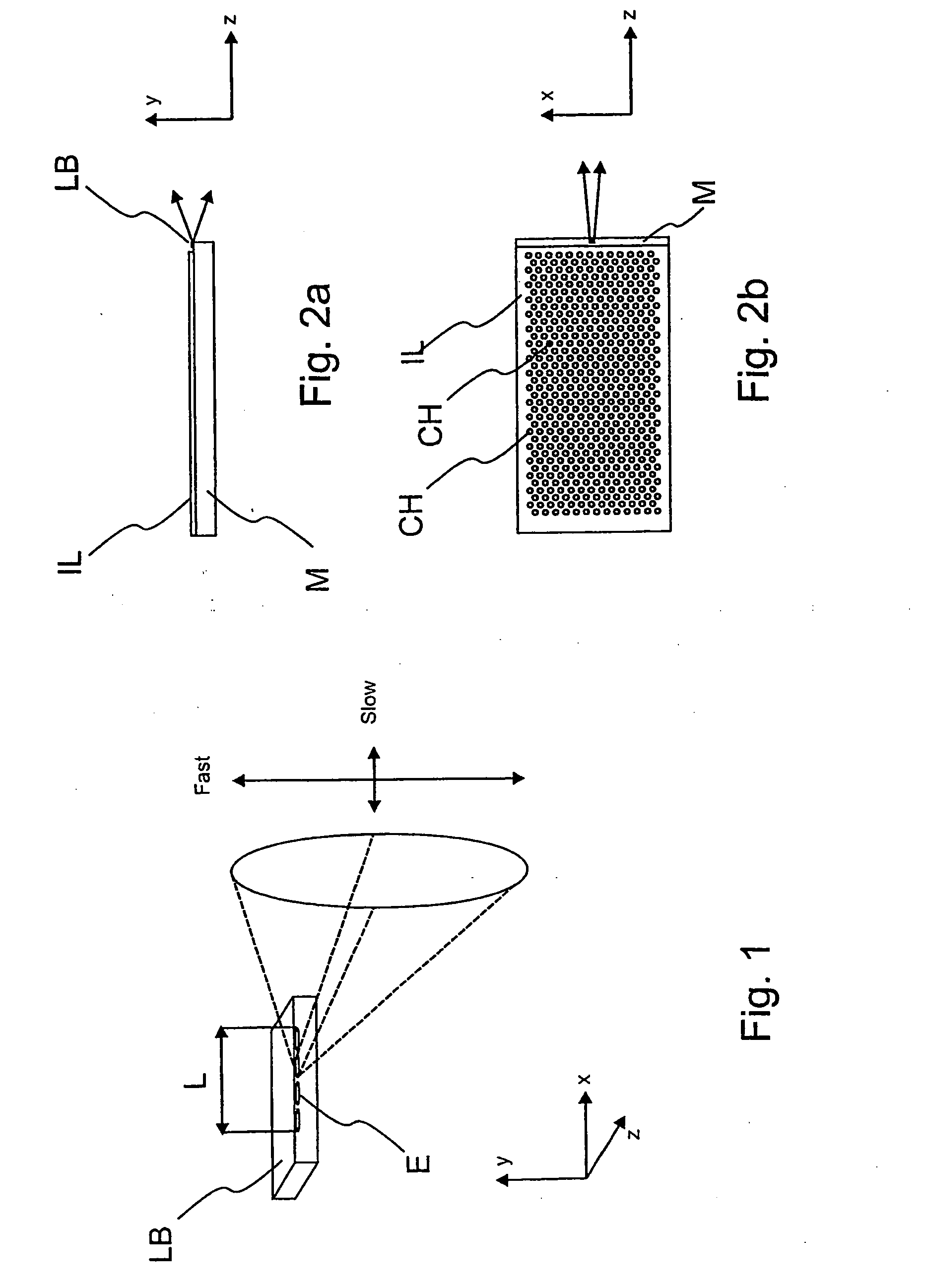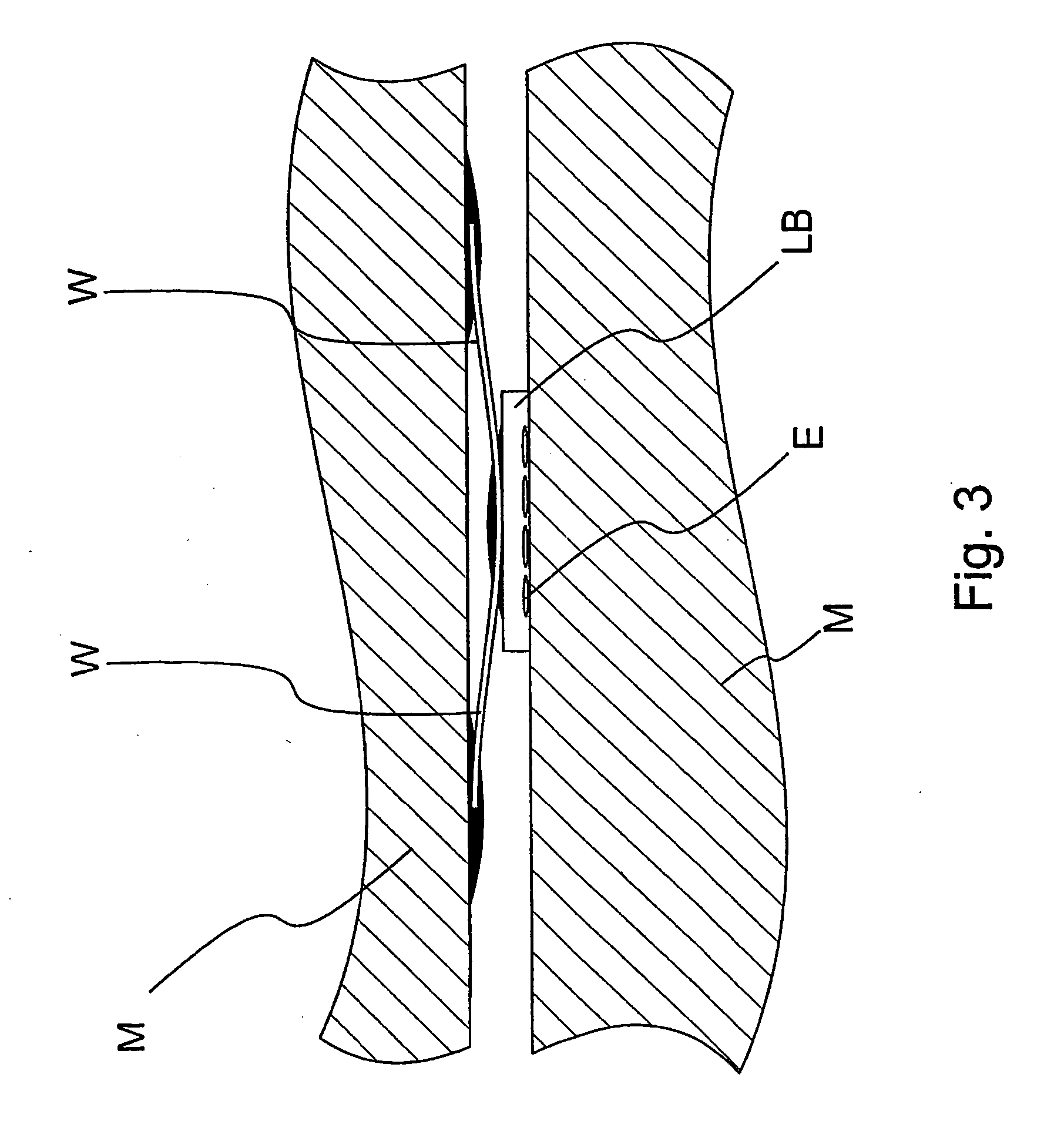Method and a laser device for producing high optical power density
a laser device and optical power density technology, applied in the direction of lasers, semiconductor laser arrangements, instruments, etc., can solve the problems of increasing the size of the light source, the inability to increase the brightness of a single light source by passive optical elements, and the light power of a single semiconductor emitter is fairly limited, so as to achieve efficient utilization of spatial, wavelength and polarization multiplexing, and simplify or more effective cooling
- Summary
- Abstract
- Description
- Claims
- Application Information
AI Technical Summary
Benefits of technology
Problems solved by technology
Method used
Image
Examples
embodiment
[0123] Embodiment According to FIG. 6
[0124]FIG. 6 describes one embodiment of the invention, in which all above-mentioned multiplexing methods are utilized simultaneously. In each sector laser the tower piles LTP61 and LTP62 manufactured of laser towers LT are positioned to two directions that are perpendicular against each other and said laser tower piles can be identical with each other. The laser tower piles LTP61 and LTP62 can be coupled in series for cooling, and they comprise suitable optical elements for compensation. The polarisation planes of the second laser tower pile LTP61 are turned 90°, whereafter the beams can be combined by using the polarisation beam combiner. The slow axis can be collimated by one steplike pile of lenses SAC after the beams have been combined. Another alternative is to provide each laser tower or laser tower pile with an individual collomation optics SAC of the slow axis.
[0125] Also in this solution the structure can be simplified in a manner allo...
PUM
| Property | Measurement | Unit |
|---|---|---|
| width | aaaaa | aaaaa |
| angle | aaaaa | aaaaa |
| height | aaaaa | aaaaa |
Abstract
Description
Claims
Application Information
 Login to View More
Login to View More - R&D
- Intellectual Property
- Life Sciences
- Materials
- Tech Scout
- Unparalleled Data Quality
- Higher Quality Content
- 60% Fewer Hallucinations
Browse by: Latest US Patents, China's latest patents, Technical Efficacy Thesaurus, Application Domain, Technology Topic, Popular Technical Reports.
© 2025 PatSnap. All rights reserved.Legal|Privacy policy|Modern Slavery Act Transparency Statement|Sitemap|About US| Contact US: help@patsnap.com



